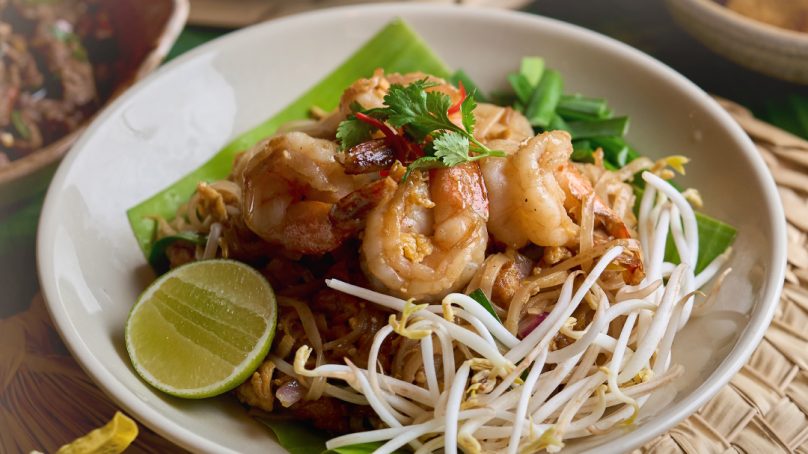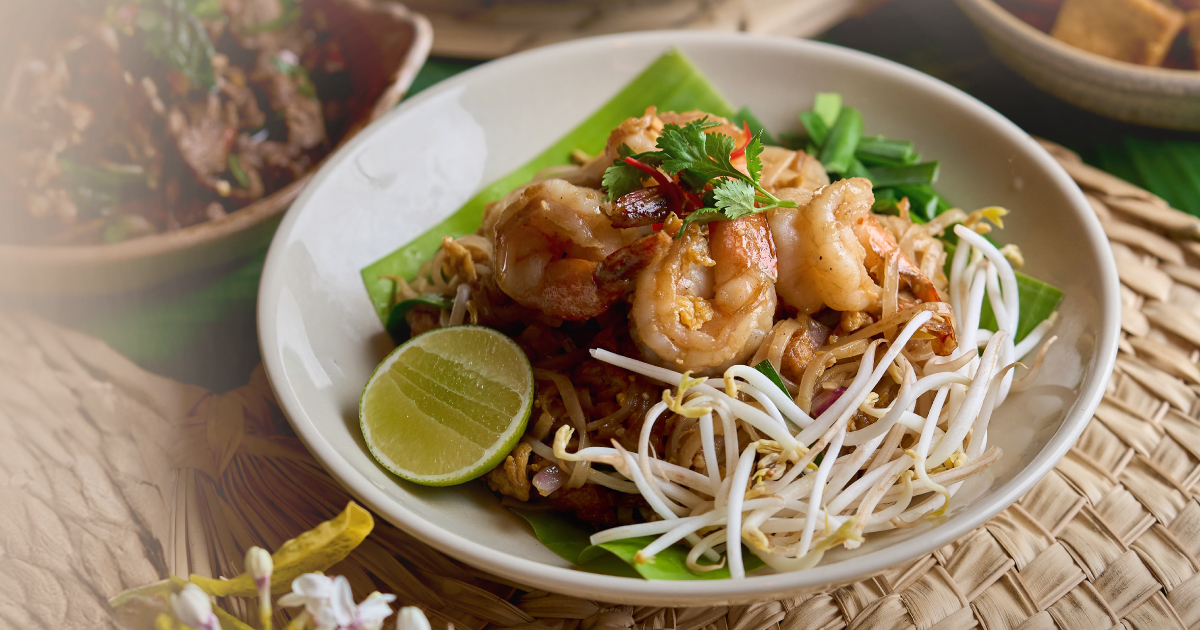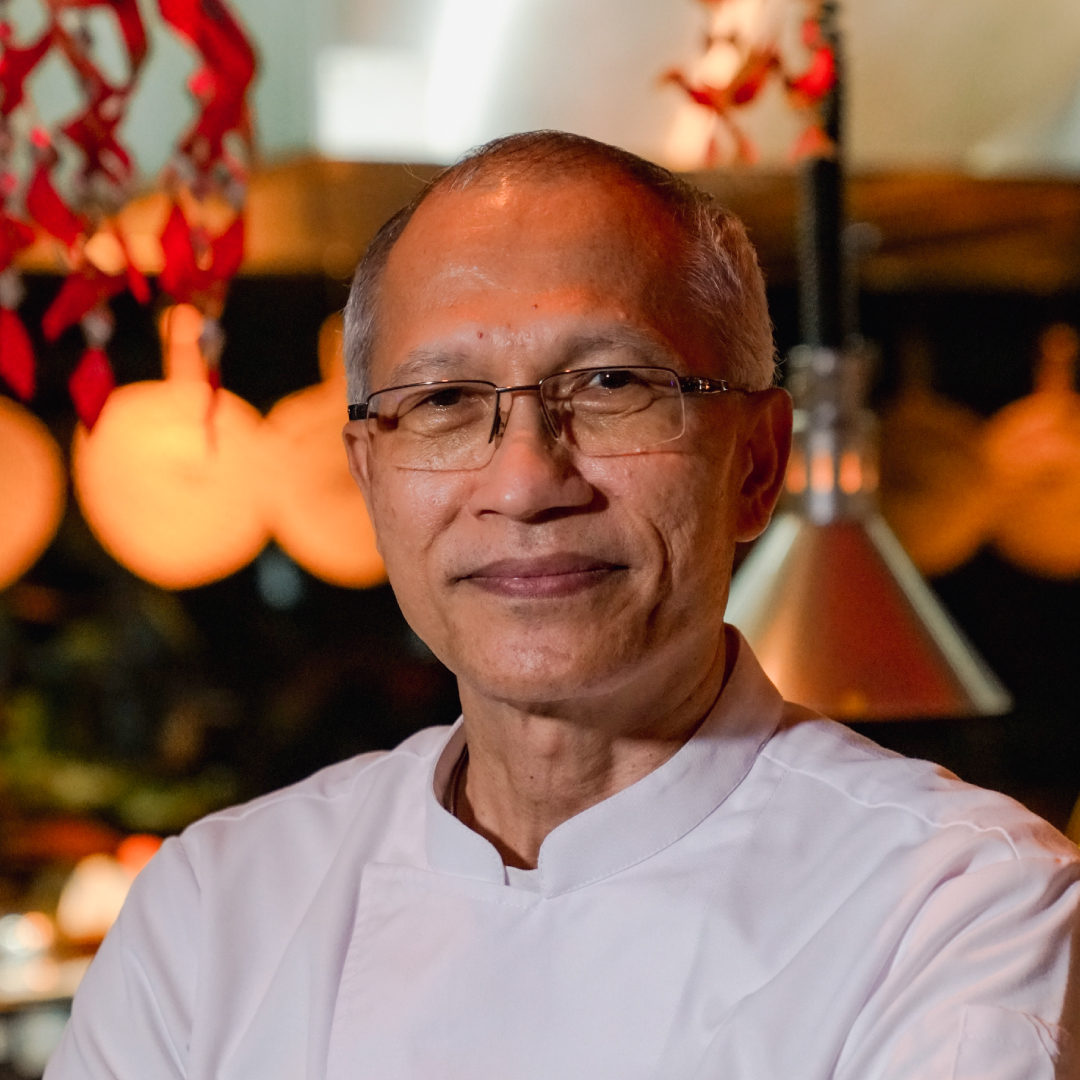

Thai cuisine differs from other varieties for several reasons, ranging from its complex flavor profile to the use of fresh ingredients. Its distinctive and harmonious blend of perfectly balanced sweet, sour, salty and spicy flavors create a symphony of tastes in every dish.
Fresh and flavorsome
The famous Tom Yum soup is a perfect representation of the complexity of Thai cuisine. Sour and spicy, it also has a hint of sweetness from the lemongrass and a salty umami flavor from the fish sauce. The combination of these flavors creates a unique, unforgettable taste.
Thai cuisine relies heavily on fresh ingredients that are readily available in local markets. The use of fresh herbs and spices is what gives Thai food its vibrant, bold flavors. These ingredients are usually chopped, grated or pounded to release their natural oils and flavors. Thai basil, lemongrass and galangal are commonly used in many Thai dishes, adding a unique flavor and aroma. The use of fresh ingredients ensures that flavors are intense and the dishes nutritious.
Importantly, Thai cuisine is all about balance. Each dish is carefully crafted to ensure that no single flavor is overwhelming.
With nothing being coursed, people are encouraged to sample many dishes at once. Food is typically shared and almost always eaten with rice. Due largely to their Buddhist influence, people are eager to share food with other community members, as well as give offerings to the monks daily.
Regional differences
Northern Thailand: the cuisine here is predominantly hot and salty, though more moderate on both counts than food found in other regions. Temperatures tend not to reach the levels needed for coconuts to thrive, so dishes are usually moistened with water or broth rather than coconut milk. Heavy forestation means that fuel for cooking is in abundant supply, making grilling popular, alongside long-cooking and braising. The forest also provides several bitter herbs, lending the cuisine a slightly astringent profile. Pork is popular as a meat, with pork fat also commonly used for frying.
Northeastern Thailand: in contrast, this part of the country has struggled with farming and the eªects of deforestation, with the cuisine having adapted to reflect this. The dishes from what is Thailand’s poorest region tend to be extremely hot and pungent, meaning smaller amounts can be used to flavor accompanying rice. Grilling and boiling are the predominant methods of cooking, with soups made of preserved fish also common.
Southern Thailand: this region’s proximity to the Gulf of Thailand sees seafood playing a huge role in its cuisine, from prawns, crabs and oysters to squid and mackerel. Whatever can’t be eaten immediately is dried in the hot sun. The shrimp paste produced by this method, for example, is the cornerstone of most Southern relishes. Food from this part of Thailand is the spiciest. The flavor profile is primarily hot, sour and salty, while coconut oil and milk are used heavily in curries, as are fresh herbs and fish.
Central Thailand: these dishes are probably the most familiar to Westerners, as most American Thai restaurants serve primarily Central-Thailand-style food. These include the red, green and massaman curries so popular in international Thai restaurants. Proximity to Bangkok allows for a diverse array of available produce, most of which is cultivated. Flavors tend to be highly complex and layered, with the dominating flavors being hot and salty. The primary meats are chicken, duck and pork, with prawns and freshwater fish also readily available. Limes provide sour contrast to curries and brothy soups.
From veg to meat
Vegetables are an essential component of Thai cuisine, whether served raw, stir fried, pickled or fermented. Raw vegetables are usually served alongside highly seasoned meats, salads and dips, creating a wonderful contrast. Typically eaten at the end of a meal, and often throughout the day, fresh tropical fruits are also regarded as highly important and revered in Thai culture. They are also used in drinks, sorbets and savory dishes.
Meat, meanwhile, is usually chopped into smaller pieces and grilled or stewed, or, through Chinese influence, stir fried or deep fried. Chilies, brought by the Portuguese from South America, have essentially replaced green peppercorn as a means of heat. Lack of refrigeration long ago led to the pickling, brining and fermenting of a vast array of meats and vegetables in the name of preservation. Many of these techniques and ingredients remain essentially unchanged to this day.
Diverse cooking methods
Thai cuisine is known for its unique and diverse cooking techniques. The use of different cooking methods, such as stir-frying, grilling, steaming and deep-frying, adds depth and complexity to the dishes. The cooking techniques also help to enhance the flavors and textures of the ingredients. For example, Thailand’s famous Papaya salad is a typical representation of the diverse cooking techniques used in Thai cuisine. Made by shredding green papaya and mixing it with a dressing created from lime juice, fish sauce and chili flakes, the salad is then pounded in a mortar and pestle to release the flavors and produce its renowned texture.
Thai cuisine – the journey
- Thai cuisine can be traced back centuries, rooted in the food of the indigenous peoples and inhabitants of neighboring countries.
- The country’s location along historic trade routes contributed to the exchange of culinary ideas and ingredients. Spices, herbs and cooking techniques from India and China, for example, have all left their mark.
- The royal court of Thailand played a significant role in shaping Thai cuisine. Royal chefs developed and refined many of the intricate dishes and presentation styles associated with Thai cuisine today.
- Thai street food has a rich history and continues to be a beloved part of local culinary culture.
- Today, Thai cuisine enjoys international popularity, while globalization has led to many adaptations and fusion dishes.
- Thai cuisine is often perceived as healthy due to its focus on fresh ingredients and balance of flavors. Many Thai dishes feature herbs and spices with potential health benefits.
- Latest food trends include the influence of Japanese-inspired elements.
- Looking ahead, plant-based Thai cuisine is expected to grow in popularity, alongside molecular gastronomy.











